I walked the beginning of the Camino de Santiago from St Jean-Pied-de-Port to Pamplona a few years ago with my my chum Gary. We were distracted by the tapas and some Swiss hikers, and we got no further.
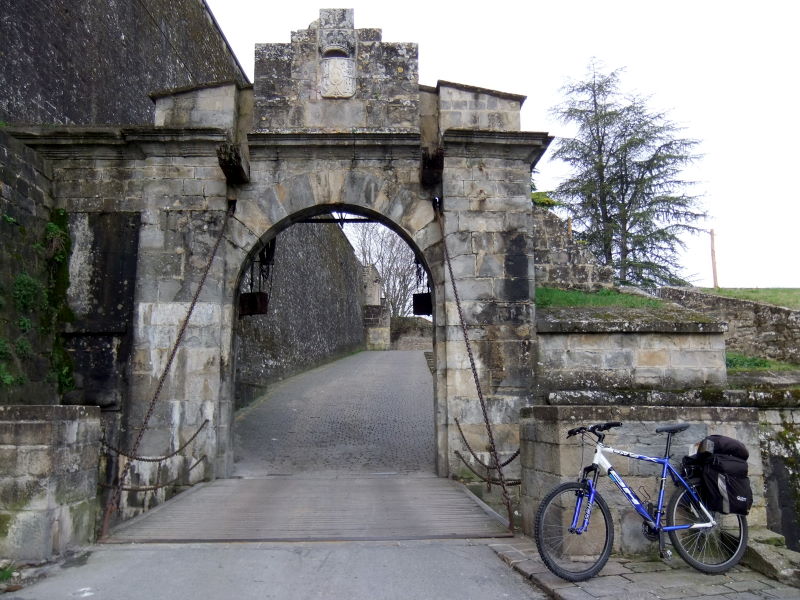
I’d wanted to complete it ever since, but on a bike. So here I was at Portal Frances, the city-wall gate that marks the ceremonial start of this leg, with the hired mountain bike that was delivered to my hostel yesterday and a grin on my face.
I was quite excited to see my first of the shell symbols set into the pavement that mark the web of pilgrim routes to Santiago de Compostela. You come across them all over Europe, sometimes in surprising places – a rural track in the middle of Poland, for example, or at old-fashioned petrol stations.
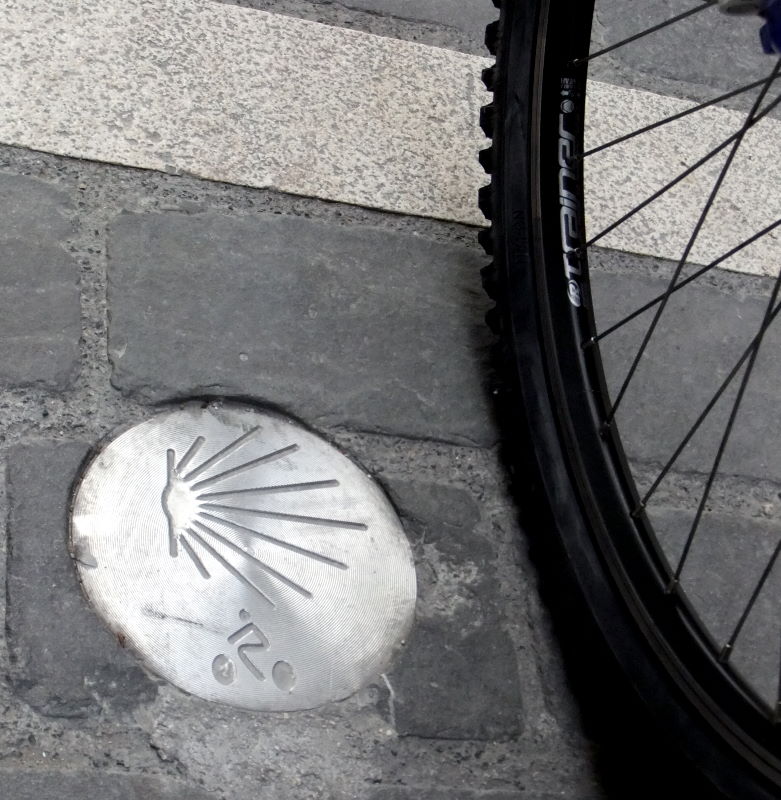
I dutifully followed them through Pamplona’s Old Town and chatted briefly to Italian guy walking it. He’d done in his leg and would only be able to do 5km today, he thought; this was to be a common story through the route.
I found my way out of town via a parkside bike lane, and managed to break my debit card in half when trying to manhandle my bike out of a cash machine cubicle. Well, real pilgrims managed without one. I’d have to as well. At least I’d managed to get some cash out. It would just have to last me.
Cycling the Camino gives you a choice all the way along. The original route became the main road; the modern walker’s way either goes alongside it or follows new alternative paths. For authenticity you’d simply cycle the main road, which would be fast but dreary. Several parts of the walker’s route are cyclable, usually quieter, sometimes more scenic but not always so. I was going to cherry-pick the best offroads bits to cycle, but take the road when it was convenient.
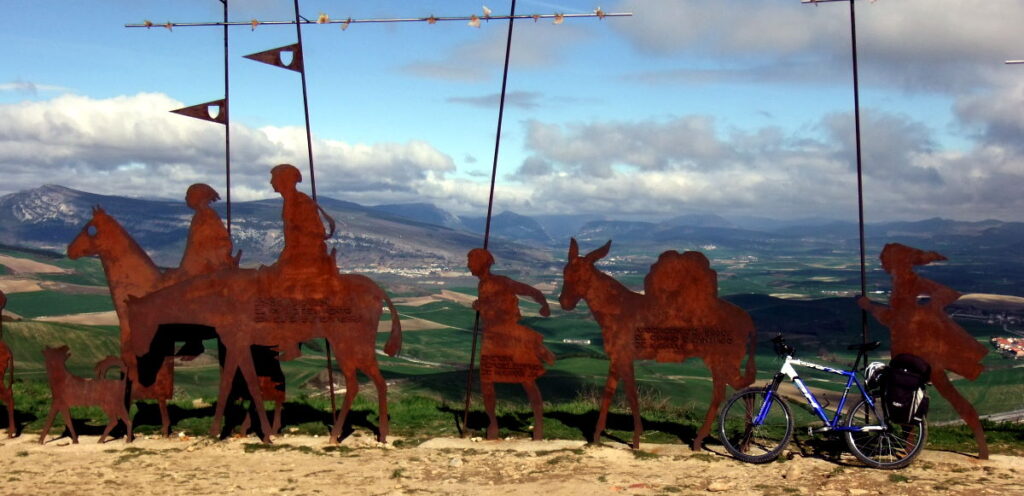
Which sounded fine in theory, but not as convincing in practice. I spent half an hour pushing up stony paths to climb a rocky ridge festively decorated with wind turbines. The views were commanding though, and there was a photogenic monument to the Camino and its pilgrims at the top.
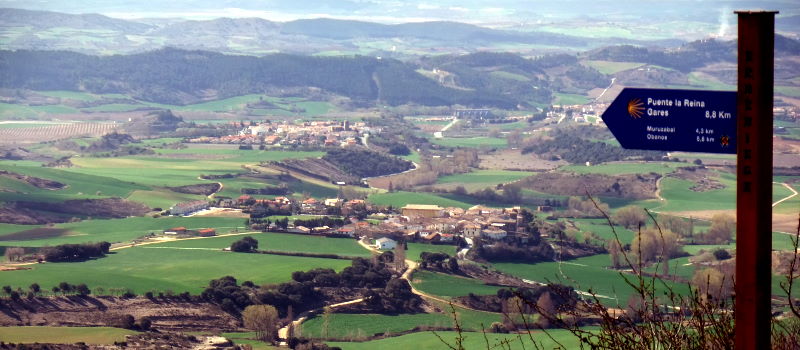
And now I could forget all about that awkward, expletive-filled push up. Because now I had an awkward, expletive-filled push down an equally rocky path to get back to the plains below.
Anyway, I regained the Camino route, with an amusing little detour into farm track territory when I missed a turning, but eventually found Eunate’s unusual church that was worth the 2km detour. It was a building that had many different sides to it. In fact, it’s octagonal.
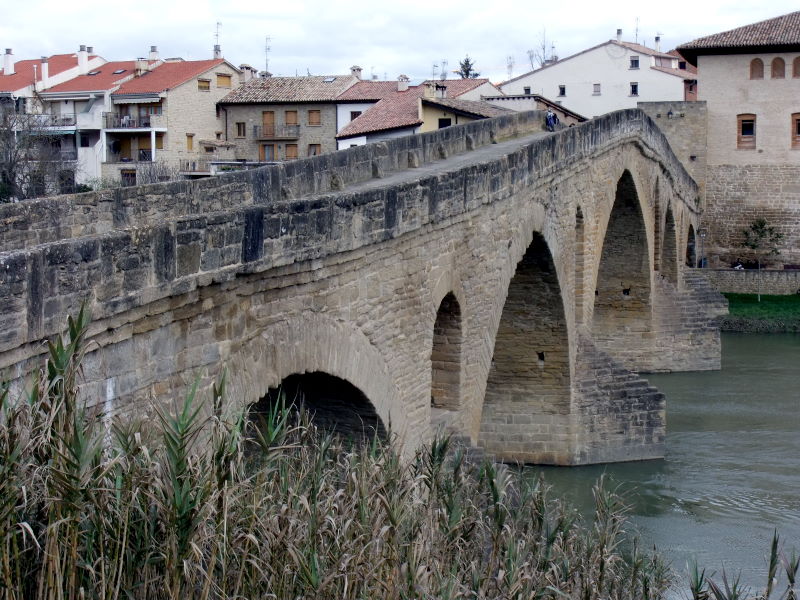
At Puenta de Reina medieval central street, two major Camino routes join. I enjoyed the vibe of the small town, bought a postcard, and looked briefly at the market as it was packing up. I whiled away a minute or few at the six-arch bridge (though it’s now seven: they found a hidden one) and set off along the road to eat some kilometres instead of tedious path-chewing.
Cirauqui proved the place for ‘lunch’ at 2.30, at the very top, by the church: a Romanesque hilltown. I was delighted to find the old Roman Road and Roman bridge, on the course of the walking Camino, out of town.
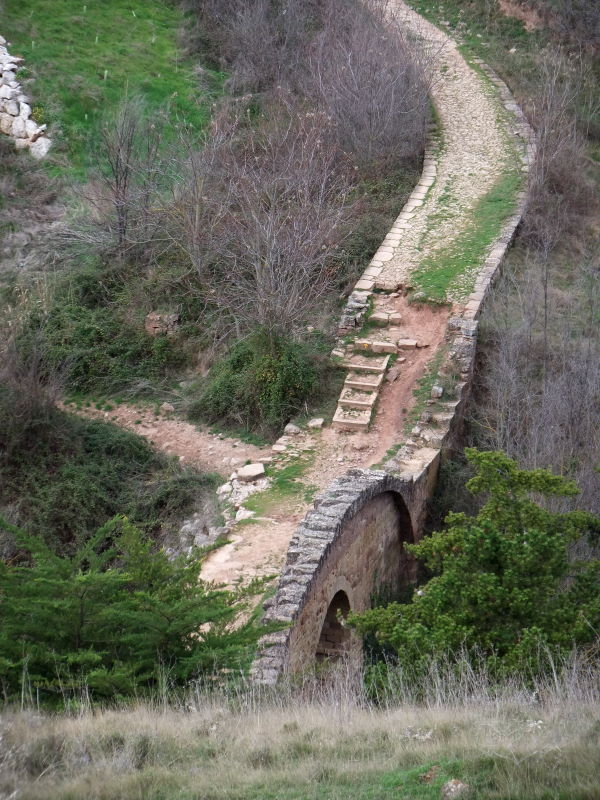
I was a little awestruck to think how many thousands of pilgrims had walked this very surface, sat here on this very wall, like me, over the centuries.
Their hopes, fears and worries were not that different from mine. Such as fretting that they too might have just chipped a tooth on an olive stone.
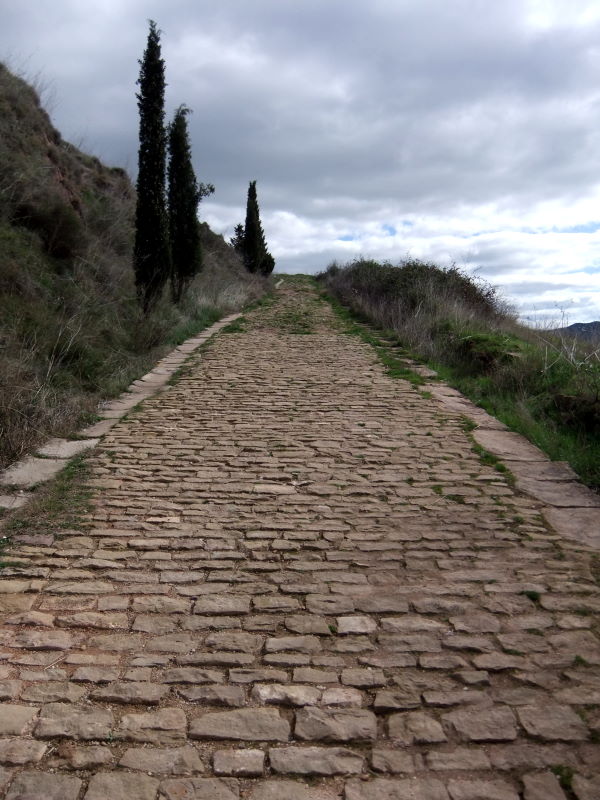
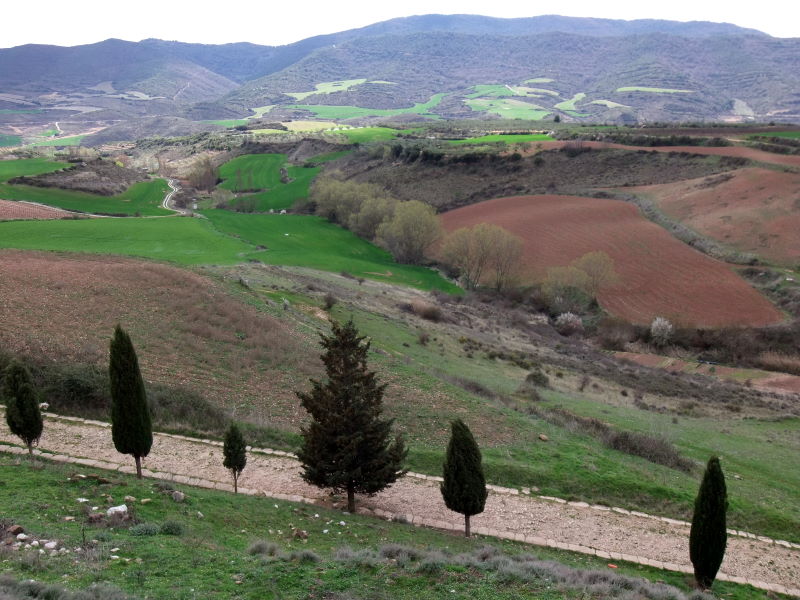
There was a bit of scrambling up and down rocky old pathways to Estella. I refollowed the walking Camino – an up and down job through town backstreets – and then found one of my most eagerly-anticipated highlights of the whole trip, entertainingly described in the Tim Moore book on walking the Camino which was about the extent of my research for the project: the Free Wine Fountain of Irache.
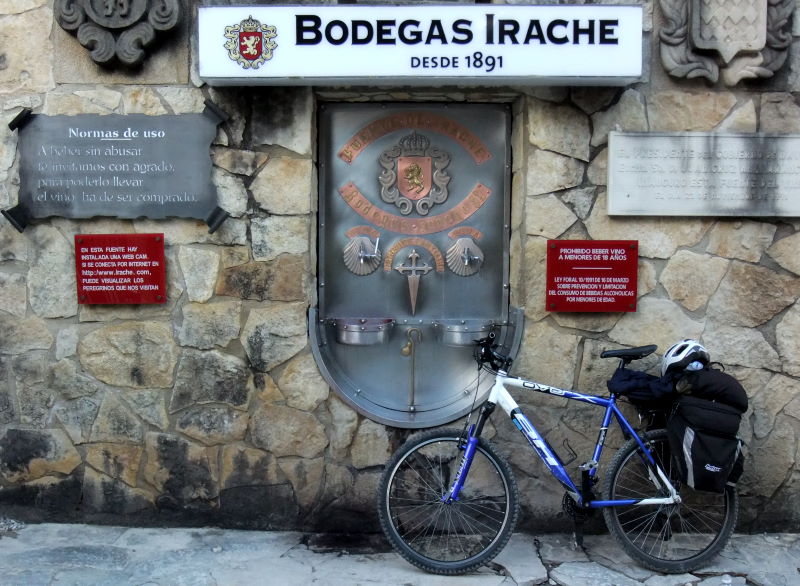
This splendid facility is a help-yourself drinking tap with a difference that the astute among you will have guessed. Yes, it yields not water but red wine, from the Irache winery. Notices politely ask you to help yourself in moderation, which I did, in moderation, and I smiled for the webcam that notices advised me was in operation.
In truth, I wasn’t in the mood for a boozing session – I hadn’t exactly abstained last night in Pamplona, and I still had twelve miles to go – so my modest glass of (I think) tempranillo was quite enough. Though, mindful of facilities being closed between here and my destination of Los Arcos, I filled my water bottle too just in case.
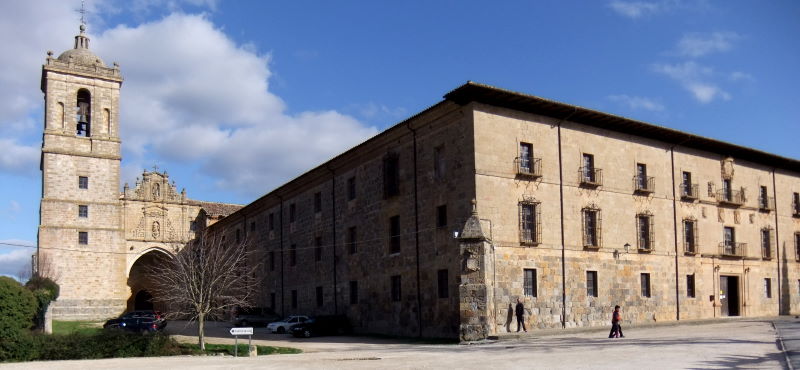
It was a fine sunny late afternoon now, the scenery was pleasantly rolling and green and the road was quiet, but it was a long slog. Tiredness ambushed me on arrival, and on learning from my guidebook that the pilgrim refuge was closed, I meekly took a single room at the Hotel Monaco; the 40 euros I handed over was more than I paid for the rest of the trip on accommodation.
It was a nice room though, overlooking the town square. I popped out for a cider (80 cents for a small glass) at the Basque bar where they were watching pelota. The bar opposite looked full but I couldn’t see any evidence that food or drink was being consumed or served, so I bought some snacks and a beer from the local shop and retired to my cosy hotel room to look down on the square and people-watch. Though as it turned out, all anyone was doing was sitting watching that same pelota match on the telly.
Miles today: 44
Miles since Pamplona: 44